MusicRadar Verdict
The TR-6S’s dinky, portable frame hides a surprising amount of depth. This could well be the most versatile budget beatmaker going.
Pros
- +
Combines emulated, sampled and FM tones, each with plenty of sound-shaping depth.
- +
Offers the full TR-8S sequencing and effects workflow but in miniature.
- +
Can send individual tracks out as audio via USB.
Cons
- -
No SD card included.
- -
Controls can be a little fiddly.
MusicRadar's got your back
What is it?
Even at the best of times, Roland’s expansive range of grooveboxes can get a little confusing. Case in point – Roland’s recent ‘606’ themed drop, which launched then TR-6S and TR-06 drum machines and TR-606 plugin.
While the latter two of these both emulate 1981’s TR-606 drum machine, the TR-6S actually has little to do with the original 606 or either of its new recreations.
In fact, the TR-6S is a close sibling to Roland’s TR-8S, the sample-equipped evolution of the company’s TR-8 digital drum machine. All clear?
Setting naming conventions aside, the important thing to note is that the TR-8S is undoubtedly the high point of Roland’s current army of beatmakers and, although this diminutive new instrument might not look like much, the TR-6S inherits much of what makes the TR-8S great.
As with its bigger sibling, the sound engine here combines a mixture of digital ‘Analog Circuit Behavior’ emulations of Roland’s classic hardware, sampled sounds and an FM synthesis engine, which was added to the TR-8S in a recent update and comes pre-installed here.
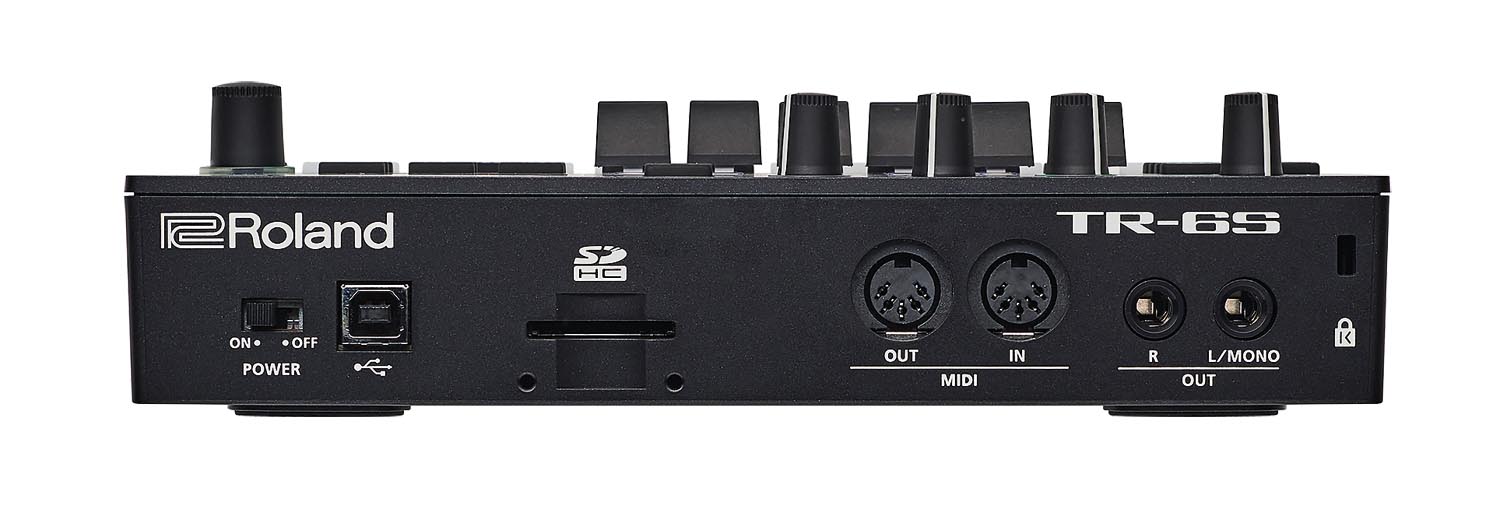
The main difference between the two machines is their size – whereas the TR-8S is a fairly standard-sized 12-track drum machine, the TR-6S is considerably more portable, with a footprint around a quarter of the size of its sibling and a track count reduced down to six.
The TR-6S also ditches the power adapter of its larger counterpart too, instead drawing power from either four AA batteries or its USB connection.
While the workflow of the two drum machines is broadly similar, the TR-6S unsurprisingly cuts down on the front panel controls somewhat. Patterns are still programmed via the traditional 16-button step sequencer, but here the satisfyingly chunky buttons of the TR-8S have been replaced with small rubber versions, which are a little fiddly but work fine as a compromise.

Each sound still has its own fader, although the travel is a little shorter here and, where each of the TR-8S’s channels has its own rotaries for tuning, decay and an assignable Ctrl parameter, here all six instruments share a single trio of rotaries.
A fair few functions are relegated to shift presses and settings menus here too, such as changing between pattern variations, editing the global reverb and delay sends, muting tracks and saving settings.
There’s a reduction in rear panel connectivity too. The TR-8S’s assignable six assignable outputs and external inputs are ditched here, keeping just a main stereo pair of output jacks and a front edge headphone port.
There are full-sized MIDI in and out ports though, along with a USB connection that can be used for power, MIDI or to allow the TR-6S to function as an audio interface, whereby it can stream each of its tracks, plus the stereo master out, to a DAW via USB. Used in this mode, users can also stream audio into the instrument, which can be sent to the reverb and delay effects and processed with sidechain ducking.
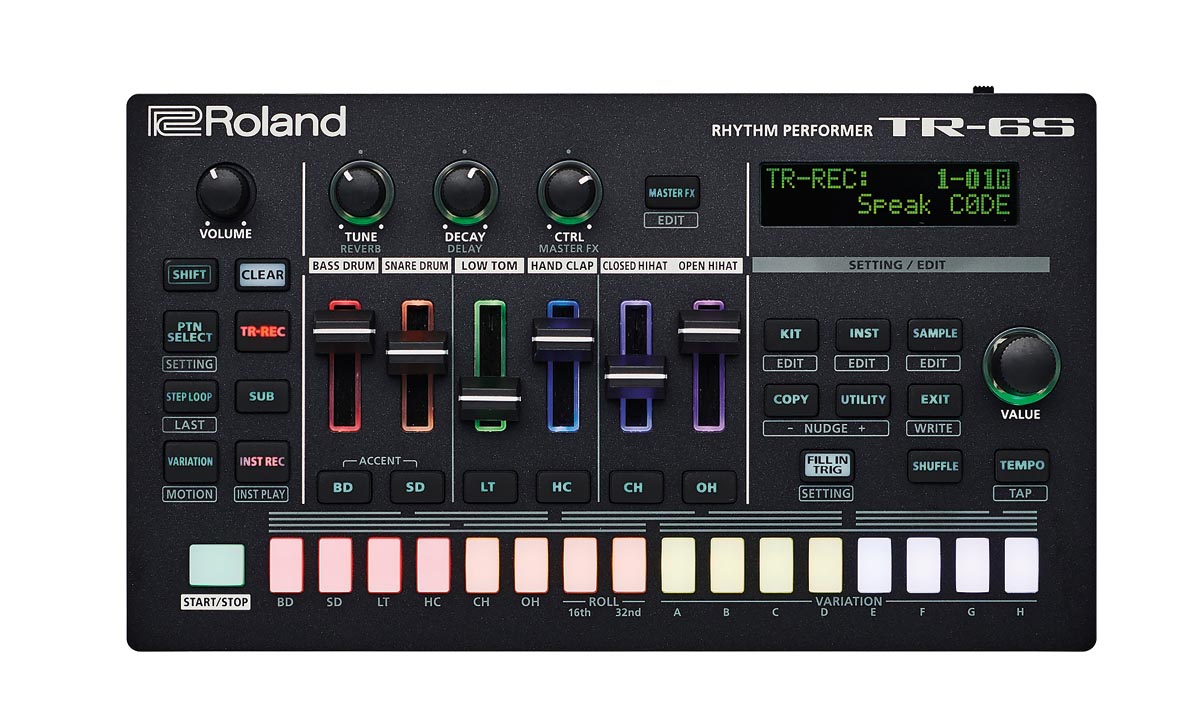
Performance and verdict
On the whole though, the TR-6S is less notable for what’s been removed than the impressive amount of depth that’s been kept from its bigger sibling.
With its small size and dinky controls, the TR-6S risks being mistaken for a fairly basic plastic toy, but under the hood this is a serious digital beatmaker. And although the track count has been halved compared to the TR-8S, for the most part the depth of the tracks themselves is carried over in full. Each track can make use of either an emulated sound, sample or FM synth tone.
The emulations offer impressive circuit-level recreations of each sound from the 909, 808, 707 and 606, in some cases also offering alternative versions with added bass or attack. Sampled tones can be drawn from the instrument’s stock of 300+ preset sounds or imported via the rear panel SD card slot (one of our few criticisms is that an SD card doesn’t come supplied).
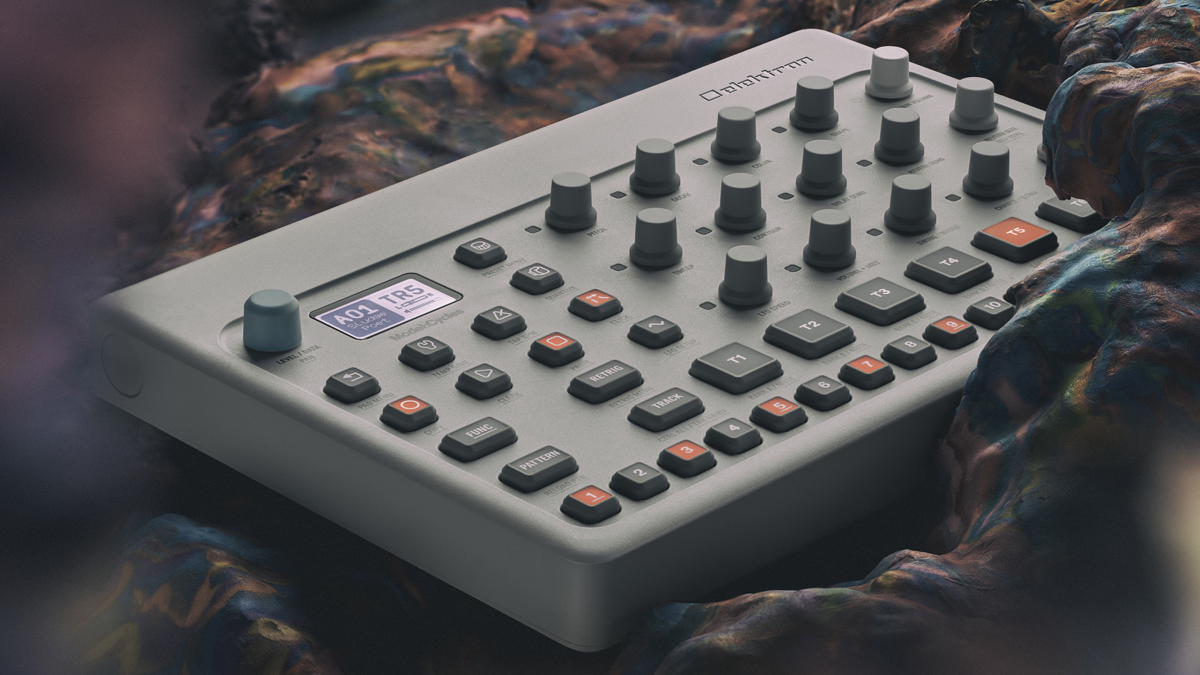
• Elektron Model:Cycles
Elektron’s FM drum machine is less versatile overall but more characterful, with some more advanced sequencing tools too.
There’s basic sample editing included for setting the start, end and naming of user samples. The FM engine meanwhile, is fairly basic, with just tuning, decay and a ‘morph’ parameter for altering the base sound, but the tones on offer themselves are great and offer a really nice accompaniment to the sampled and emulated sounds.
Beyond core sound generation, each channel has a variety of instrument parameters which vary slightly depending on the type of sound used. Common features to all sounds include LFO routing, allowing the kit’s master LFO to modulate to a host of parameters such as tuning, panning and decay, along with an instrument effect slot that can play host to one of 16 processors, which cover filtering, EQs, distortion, ring mod and more.
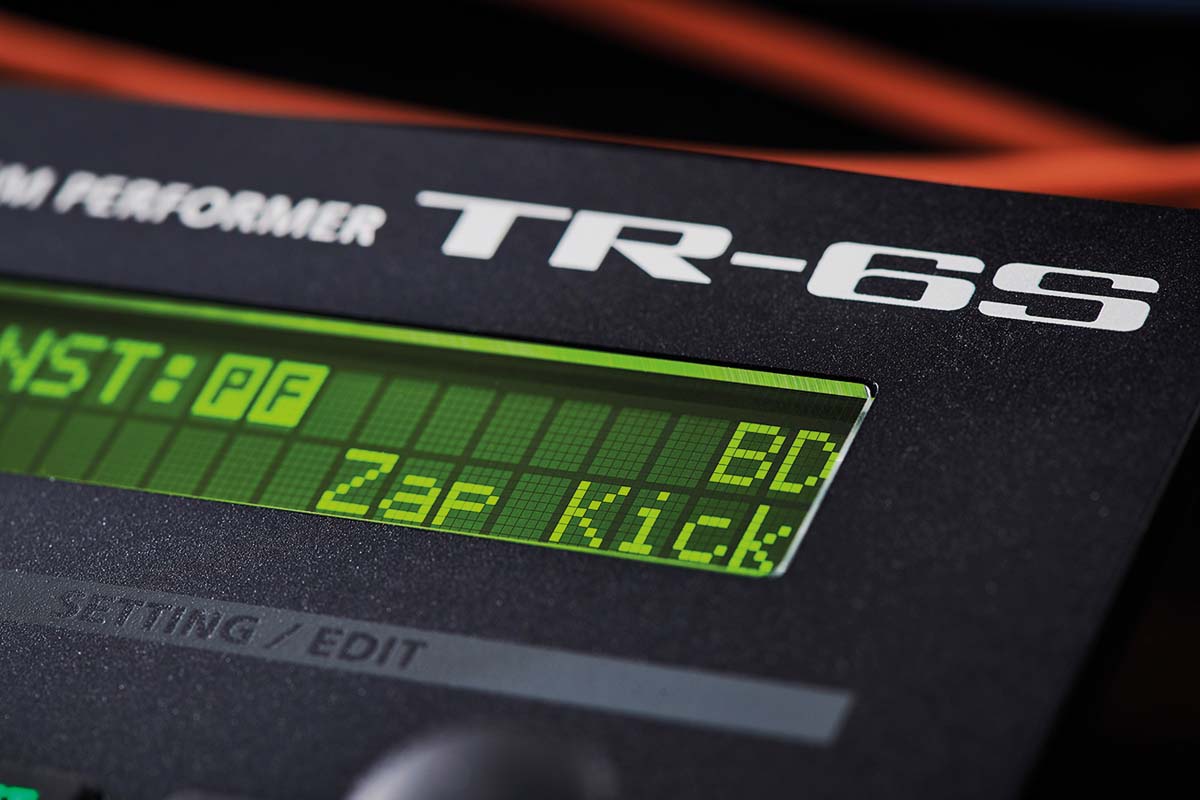
As with the TR-8S, each instrument can make use of a customisable Ctrl rotary, which can be used for live tweaking of a single parameter. On top of this, the TR-6S has a master effect module that can make use of 19 effect types, as well as separate delay and reverb send effects.
Effects-wise, the only big element missing from the TR-8S is the glitchy Auto-Fill/Scatter effect. Taken as a whole, it’s a serious amount of power for such a small drum box.
While there are arguably more unique-sounding and characterful budget drum machines out there – Korg’s Volca Drum and Elektron’s Model:Cycles spring to mind – I can’t think of anything that offers this sort of versatility and flexibility this side of the £400 mark.
As a first drum machine or a portable, convenient source of staple drum sounds, the TR-6S is very hard to beat.
MusicRadar verdict: The TR-6S’s dinky, portable frame hides a surprising amount of depth. This could well be the most versatile budget beatmaker going.
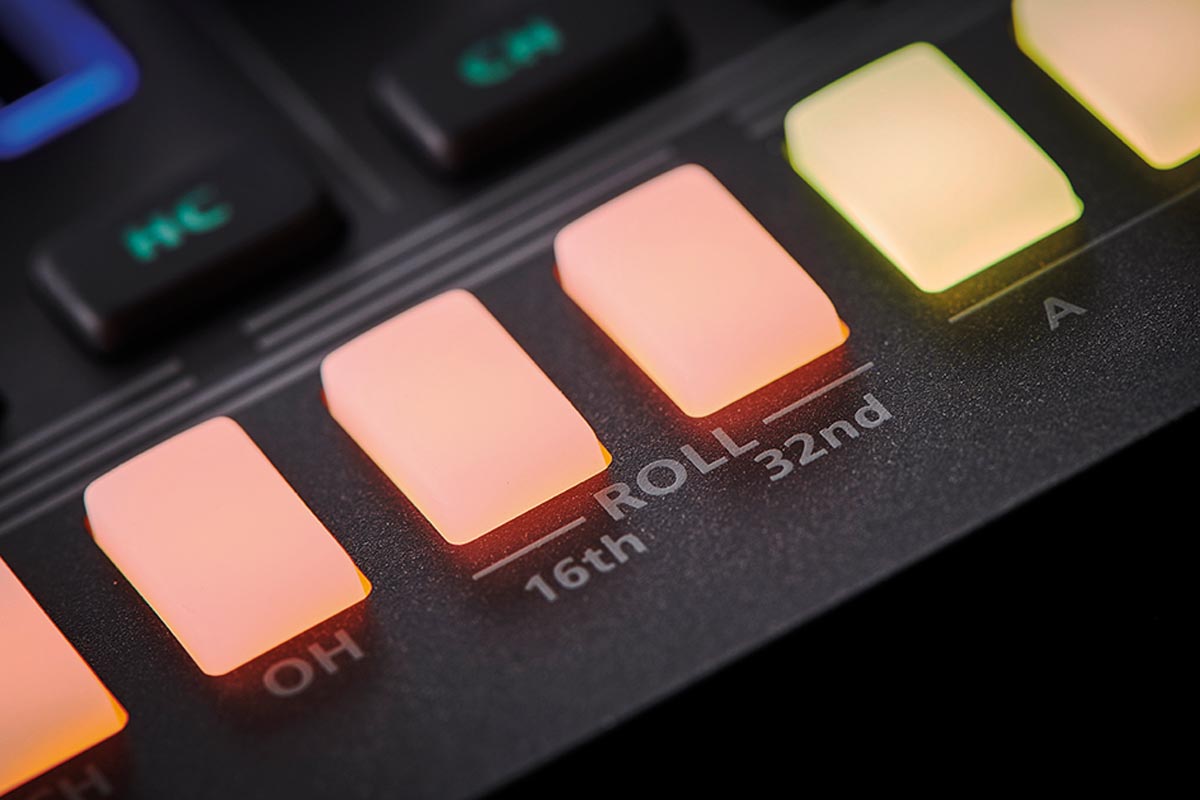
The web says
"But what makes the 6S and the 8S special is their modeling of classic Roland drum machines. Rather than just spit out an 808 kick sample, the original 808 is modeled – down to the circuit level – inside the 6S. Does it sound exactly like the real thing? No. But it gets pretty close, and since it’s synthesis based, not sample based, there are a lot more sound design options available to you."
Endgadget
"The TR-6S comes in around £200 cheaper than the TR-8S but the core essence of what makes the TR-8S such a good instrument remains intact. Yes, you miss out on quite a bit in terms of the hands-on control and more extensive interface that the 8S offers, but the bottom line is that in terms of sound and music-making capabilities, the 6S can do most of what the 8S does."
Juno Reviews
Hands-on demos
Roland
Red Means Recording
Accurate Beats
Specifications
- TYPE: Six-track digital drum machine
- KEY FEATURES: Combines Analog Circuit Behavior emulations of the TR-909, TR-808, TR-707 and TR-606 with sampled sounds and FM synth tones. Battery powered. Can operate as a USB MIDI and audio interface
- CONTACT: Roland
I'm the Managing Editor of Music Technology at MusicRadar and former Editor-in-Chief of Future Music, Computer Music and Electronic Musician. I've been messing around with music tech in various forms for over two decades. I've also spent the last 10 years forgetting how to play guitar. Find me in the chillout room at raves complaining that it's past my bedtime.
“KIKI BOY 2025”: Frank Ocean appears to be teasing something... or other
“This is great. I knew I was getting to them! I’m so happy. It’s such a good feeling”: Spotify bites back at Kate Nash
“The included sample content is not only unique but sonically amazing, as it always was”: Spitfire Audio BBC Radiophonic Workshop review










